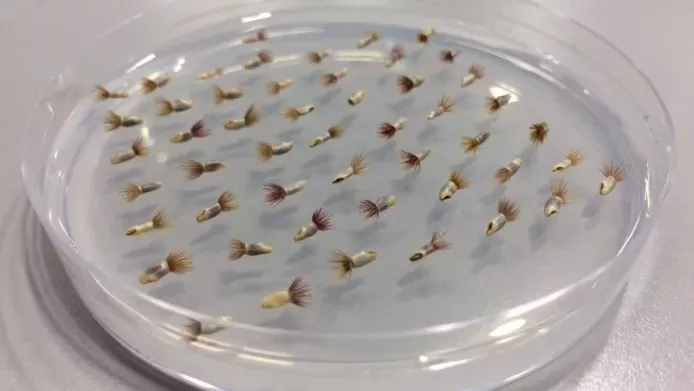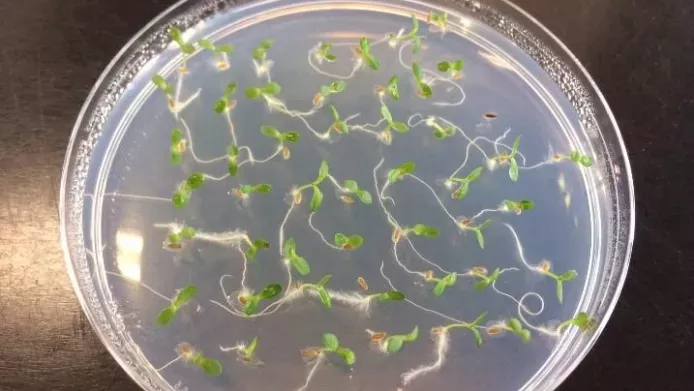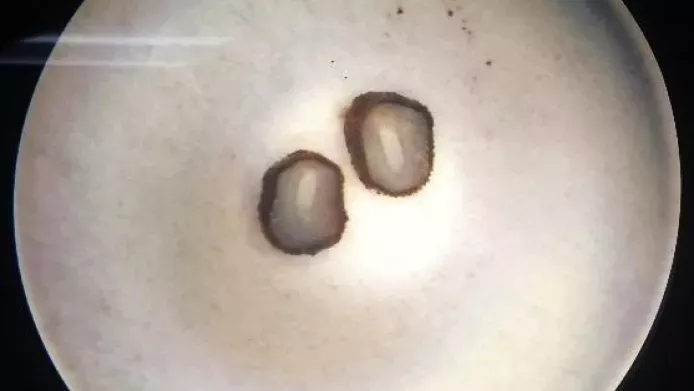Ever wondered how we make sure the wildflower seeds we provide will grow into healthy plants?
Our seeds are tested at Kew's Millennium Seed Bank, at Wakehurst Place, home to the world’s largest collection of seeds from wild plants.
The Millennium Seed Bank contains over 2.4 billion seeds, banked to conserve them for the future. Seeds collected from around the world by our global partnership are stored underground in flood, bomb and radiation-proof vaults.
The seeds we include in our seed kits are carefully selected to ensure they have the best viability possible. But what does this mean?

Viability testing
Viability testing is the process by which we find out if the seeds have a reasonable chance of succeeding – growing into plants. The seeds we provide have a viability score of 70 per cent or higher. Some seeds did not pass the viability test so are not included in this year's packets. For example, there are sadly no poppy seeds in the England and Wales seed mixes because they had a viability far below 70 per cent.
So how does viability testing actually work? Sarah Pocock, UK Native Seed Hub Project Assistant at the Millennium Seed Bank, tells us exactly what happens...
Step 1: X-ray a sample to check for empty seeds, insects or disease
Before starting a germination test, a sample of seeds, usually 50, undergoes x-ray examination. This allows us to see whether seeds are fully developed and whether they have been infested by insects. X-raying a small sample means we can get a good idea of the quality of the whole collection without the need for a destructive cut test, where seeds are cut in half to inspect the quality.
Step 2: If required, apply special treatments to break dormancy and enable the seeds to germinate
Some species display dormancy, which prevents the seed from germinating until the timing is right, even under ideal conditions for germination. These species may need to go through a period of cold, to imitate a winter season, before germination can happen in warmer, spring temperatures.
Others have a hard seed coat which prevents the uptake of water, which can also inhibit germination. To overcome this, we can use forceps and a scalpel under a microscope to remove a small piece of the seed coat which allows the seed to take up water and begin germination.
Step 3: Place the seeds on agar jelly plates and store in previously established temperatures
Agar is used for viability testing as it allows the seeds to take up water, thereby starting processes inside the seed which lead to germination. Also, as it is transparent, agar lets us clearly see when germination has occurred. Some dormant species require plant growth hormones to stimulate germination in the lab, which we can add to the agar where it will be taken up by the seeds.
For viability tests, we use three samples of 50 seeds, each on a different agar plate, to achieve results which can then be statistically analysed.
Using our database of tried-and-tested temperatures, we can choose which incubator to use for each species to encourage the greatest germination in the shortest time. Some species prefer constant temperatures, whereas other, usually small-seeded species, germinate best when alternating warm day and cool night temperatures are used.
Step 4: Examine the seeds weekly for germination
Every week, the plates are examined for germination. When seeds germinate, they are removed from the plate using forceps and germination is noted on the test sheet. If we kept all the seeds that germinate, we would have hundreds of new plants every week, so when the seeds have germinated, they are thrown away.

Step 5: After four weeks, assess any remaining seeds to check if they are healthy or dead
After four weeks, the viability tests are finished. Any remaining seeds that have not germinated are dissected to determine whether they are fresh and healthy, or mouldy and dead. Fresh, healthy seeds may be viable even if they have not germinated – it may be that they just needed more time, a different incubation temperature or a dormancy-breaking pre-treatment. Mouldy seeds have died and therefore are not viable, so could not grow into healthy plants for creating new habitats.

Fascinated by seeds and want to grow your interest (pun intended)? Learn more about the Millennium Seed Bank.
